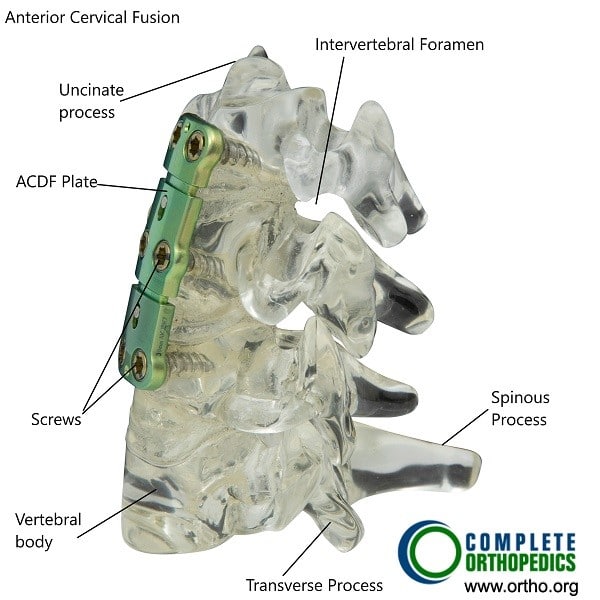Juvenile Idiopathic Arthritis
Juvenile idiopathic arthritis (JIA) is an inflammatory arthritis that affects children aged 16 years or less. The symptoms typically last for 6 weeks or more and a number of joints may be involved including the spine. Juvenile idiopathic arthritis was previously known as juvenile rheumatoid arthritis but it is now known that it is not simply rheumatoid arthritis of the children. The disease encompasses a wide range of symptoms and the cause of JIA is unknown.
Juvenile idiopathic arthritis leads to inflammation of the joints in the body that may cause pain, stiffness, swelling, instability, or loss of function of the joint involved. The facet joints in the spine are synovial joints and the cervical spine is usually affected by juvenile idiopathic arthritis.

Anterior cervical fusion may be done in severe cases of arthritis and instability of the cervical spine resulting from juvenile idiopathic arthritis.
The inflammation from juvenile idiopathic arthritis not only affects the joint but the ligaments, tendons, bone, and muscles around the joints. Patients usually present with pain, swelling, increased temperature, stiffness of multiple joints. The symptoms may be associated with intermittent low-grade fever, rash, inflammation of the eye (iridocyclitis), morning stiffness.
Female adolescents are more commonly affected than males and the above symptoms last more than six weeks. The iridocyclitis in the eye may cause blurring of the vision and may lead to rapid loss of vision if left untreated. The involvement of the cervical spine may lead to pain, stiffness, abnormal curvature (kyphosis), or instability.
Still’s disease is a variant of juvenile arthritis that may present as fever, rash, joint pain, along with enlargement of the spleen. Still’s disease usually presents in children aged 5-10 years.
The classification of juvenile idiopathic arthritis depends upon the number of joints involved and the involvement of organ systems other than the joints. In the polyarticular type, usually more than 5 joints are involved and the joints most commonly involved are of the hand and the wrist.
In pauciarticular juvenile arthritis, less than 5 joints are involved and the joints typically involved are the knees and ankles. The patients may have limb deformities as growing centers of the bones may be involved. There is frequent involvement of the eyes.
Systemic juvenile arthritis involves multiple joints along with the involvement of the spleen, liver, heart and lymph nodes. There may be a rash and a child may have intermittent fever.
The symptoms of morning stiffness and joint pain frequently present in a child as limping and inability to use the limb, especially in the morning. Visual changes and rash may become evident on physical examination.
The diagnostic work up done by the physician includes a thorough history preceding the symptoms and the course of the disease. The physician may do a physical examination to check for the function of the various joints. Blood investigations form a major part of diagnostic workout and involve testing for RA factor, ANA, and ESR, CRP. The physician may perform blood tests to rule out infection.
Once diagnosed the treatment consists of use of disease modifying drugs such as Etarnacept, Rituximab, Azathioprine, etc. The child may require frequent ophthalmic examinations. High dose steroid medications may be used in some patients.
Bone cutting and bone fusion surgeries may be performed in patients with severe disease who have reached skeletal maturity.
My name is Dr. Suhirad Khokhar, and am an orthopaedic surgeon. I completed my MBBS (Bachelor of Medicine & Bachelor of Surgery) at Govt. Medical College, Patiala, India.
I specialize in musculoskeletal disorders and their management, and have personally approved of and written this content.
My profile page has all of my educational information, work experience, and all the pages on this site that I've contributed to.

